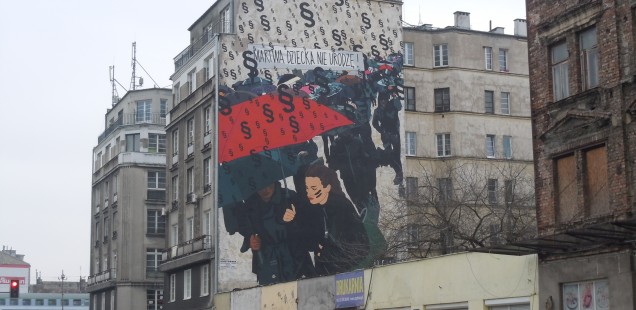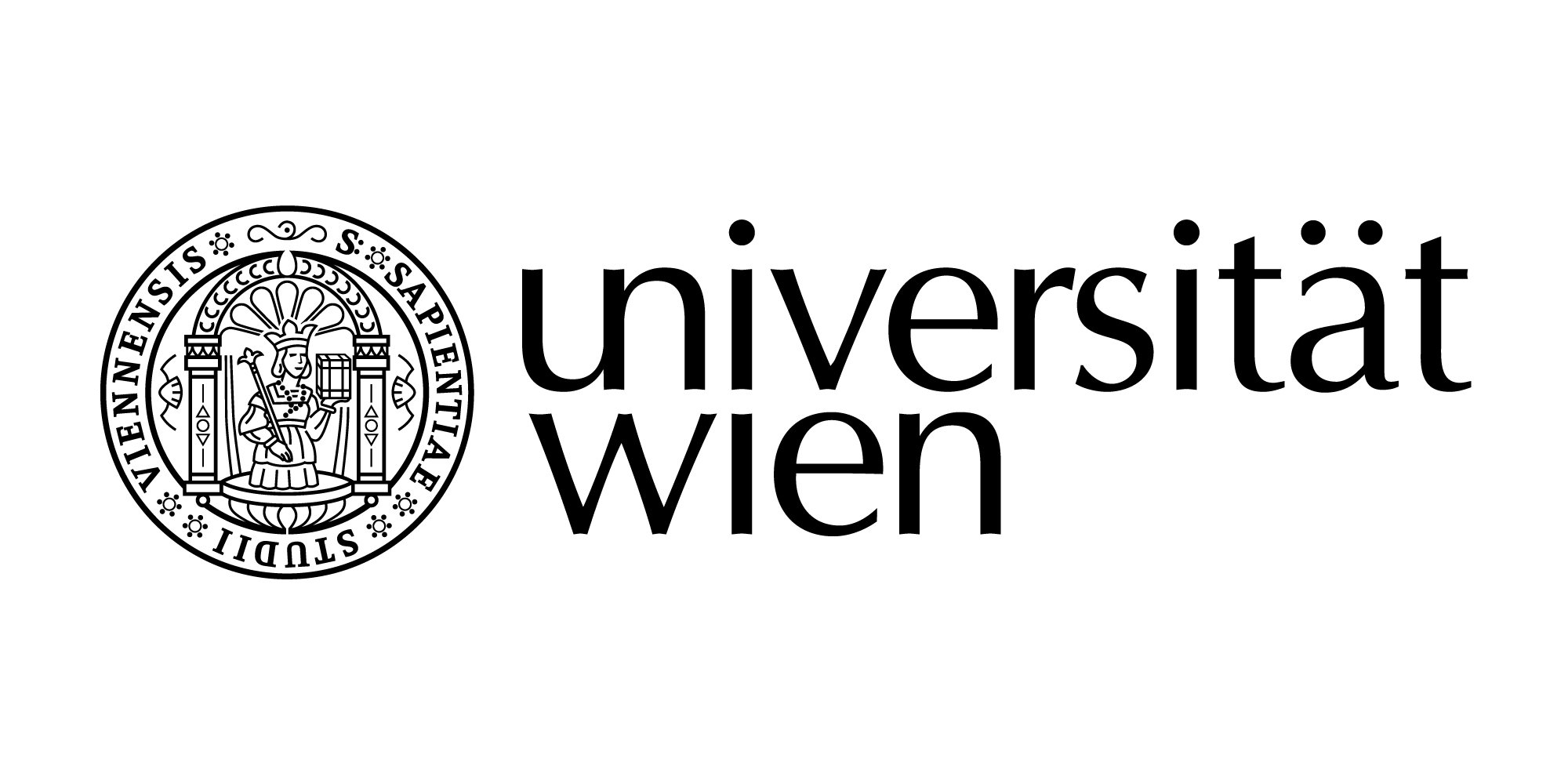
The Misuses of Life. On Recent Abortion-Related Protests in Poland
Autumn in Poland came together with heated discussions concerning abortion law. When parliament accepted to vote on the law introducing further restrictions on the existing abortion regulations, Polish women (and men) dressed black, took their umbrellas and joined in the Black Protests and The Nationwide Women’s Strike on Monday, 3rd of October. Women protested in many Polish cities and on different dates, but it was the 3rd of October (the so called “Black Monday”) that attracted media attention across Europe as it gathered thousands of women demonstrating in the pouring rain (hence the umbrellas) against the near-total abortion ban. “Black Monday” was brought into the spotlight because it was effective – two days after protests the government withdrew the abortion ban from further discussions. But was it a success?
A very short history of “abortion compromise”
The abortion law, as it is now being sometimes called the “abortion compromise”[i], is a result of negotiations between representatives of catholic conservatives and liberals. Since 1993, abortion in Poland is allowed in three circumstances only (otherwise it is banned): when pregnancy poses a serious health risk or puts the woman’s life in danger, when pregnancy is a consequence of a criminal act or when the fetus is severely and irreversibly damaged. The existing law ruled out performing legal abortions in case of difficult living conditions. This circumstance was accepted as a ground for abortion before 1993 and shortly in 1996. However, the Constitutional Court’s ruling from the 27th of May 1997 declared it unconstitutional and disqualified poor living conditions as a situation when abortion is permitted. On the 7th of October 2015, the Constitutional Court, referring to the so called “conscience clause”, also ruled that a doctor who refuses to perform abortions is not obliged (as they were before) to indicate a hospital that performs abortions. It means that pregnant women (seeking to legally obtain an abortion) will not receive any information from the doctor and would need to speak to the administration of the hospital or officials from the National Health Fund instead. This in turn entails being outside of physician-patient privilege.
In the background of those rulings and law reformulations discussions concerning abortion are still going strong, in particular the circumstances under which abortion should be acceptable. In fact, the question of abortion seems still open. Supporters of banning abortion and supporters of legalizing it are protesting every now and then, organizing exhibitions, meetings, and manifestations. In recent years, the so called pro-life movements are particularly active to the extent that anti-abortion posters are a usual element of public sphere (although disturbing and manipulative) and the images of physical, psychological, and moral damage (no matter how questionable they would seem) caused by abortion became a regular part of the city landscape.
After last year’s parliament and presidential elections, the general climate of close collaboration between the government, the president and the episcopacy allowed “pro-lifers” to assume that draft legislation of a near-total abortion ban might pass. The “Black Monday” was a response to this struggle against rendering impossible almost all abortion cases whatsoever. Nonetheless, it was just the tip of the iceberg of debates around the topic in question. The efforts to renegotiate the “abortion compromise” (by for example banning abortion in cases when the fetus is severely and irreversibly damaged) will not be abandoned and the fight against banning abortion is not over. In fact, we now have ahead of us much tougher fight to face – fight against propaganda and misleading information and against the government that right now may declare that it is against the near-total abortion ban (“we do not want to penalize women as the project postulated”) but that it also feels strong about taking steps to protect “unborn life”, the innocent victims (severely and irreversibly damaged fetuses called “unborn children”) from cruel death.
Whose life matters? / Whose freedom matters?
Women protesting during The Nationwide Women’s Strike used symbols important for recent Polish history: the symbol of “Anchor”, referring to Poland fighting for independence during World War II (on “Black Monday” the umbrella or plait and breasts were added to the “Anchor”[ii]), the reworking of a famous poster “High Noon” by Tomasz Sarnecki (designed to promote the first free elections on the 4th of June 1989 in Poland[iii]) – the “remake” was designed by Sanja Iveković and commissioned by the Museum of Modern Art in Warsaw as a part of the project “Invisible Women of Solidarity”[iv] and the famous logo of “Solidarity” by Jerzy Janiszewski and its reworkings. In both cases, women, protesting by using broadly recognized symbols of Polish fight for freedom, were not only expressing their struggle for freedom to decide over their own bodies and to shape their lives in consonance with their own believes and consciences. They were also engaging themselves in a debate concerning the visibility of women in Polish history (and in Polish present and future) and the problem of erasing women from the historical (contemporary and future) events that are important points of reference for today’s discussions. Using those precise associations by women protesters means thus posing two questions relevant for present-day politics, namely: Whose life matters? and Whose freedom matters? Moreover, referring to values such as independence, autonomy, freedom, and solidarity today marks an uncanny return haunting the present political and social moment in and beyond Poland.
Fading privileges
I believe that the situation in Poland today (also the question of abortion discussed here) is not an isolated case in Europe and the United States. We are not an empire within an empire. Growing popularity of racist, homophobic, transphobic, misogynist, and nationalist movements that claim “political correctness” to be a means of censorship and their voice to be the real voice of the people, and thus entirely democratic, reflects conflicts underlying the current power dynamics and above all – fear of losing privileges[v]. In Poland, fear of losing privileges has many disguises (like in other countries undoubtedly) one of which being the anti-abortion movement. It becomes clear when we attempt to answer questions such as: Whose life matters and whose freedom matters? Unborn life of unborn children and freedom for unborn to be born are priorities for the anti-abortion movement. In fact, unborn life is a symbol of innocence and thus is treated as an innocent victim; to place oneself on the position of a fighter for innocent victim (i.e. unborn life) seems to end all the discussions about, among other things, the role and image of women and men in the society, sexual education, reproductive health, the quality of life. To act in the name of the “innocent victim” (innocent because unborn) is to deny responsibility for all persons in society: once one is born, one is never again innocent; one is immersed in social relations, troublesome questions, and difficult choices. “Innocent/unborn life” is thus a dream of easy solutions which brackets existing power relations and posits supporters of introducing anti-abortion law in a safe, yet imaginary place of being outside the relations of domination. This position, imaginary as it is, is also a convenient way to secure existing power relations by obliterating the fact that pregnancy is always situated in personal, economic, social, psychological, moral, individual, sexual – to name a few – contexts and instead placing oneself in a position of moral superiority which, in reality, is blind to the practices of care for the living and for life. This is a way to make women, their relations, and lives invisible and silenced. The fetus thus becomes a tool for realizing this plan of maintaining the dominance of the white man, the Catholic Church, and the patriarchy and of making it impossible for woman to find a voice, conscience and feeling of their own.
“We do not furl our umbrellas”
Feminist organizations and voices in Poland made it very clear that the so-called “success” of The Nationwide Women’s Strike on Monday, the 3rd of October was judged too early and they made it clear that “we do not furl our umbrellas”, we need to stay alert[vi]. On the one hand, we need to be wide-awake to be able to react against the re-negotiations of the existing abortion law. It is highly probable that the government sets a goal of limiting the situations in which abortion is legal (the parliament is now discussing a law called “For Life” that among other things is securing a one-time benefit for women that will decide to give birth to severely and irreversibly impaired child or child suffering for deadly disease, the benefit amounts to c. 900 euro; this move is a misusage of economic privilege and may be a preparation to banning abortion in cases where the fetus is severely and irreversibly damaged). On the other hand, however what undermines the position of an activist engaged in fighting for women’s rights is the myth of feminism as an outdated idea[vii] and presenting abortion as a “substitute topic”[viii] meant to cover other more important debates and to redirect public opinion from the “really” crucial issues to the “marginal question” of abortion. Both claims weaken the alertness, ridicule the engagement (by stating that we are engaging in “outdated” and “insignificant” problems), and finally give us yet another confirmation that women’s lives and freedom do not (really) matter.
[0] Cover photo: the mural (Warsaw) was designed by Marta Frej and the text on it says: “I can’t give birth to a child, when I’m dead”. (©Monika Rogowska-Stangret)
[i] Using the term „abortion compromise” is controversial as claimed by people arguing for liberalization of abortion law because it is believed to be a false compromise – not a compromise but an effort to suit the demands of a Catholic church in Poland.
[ii] It is currently being analyzed if the symbol of the “Anchor” was not abused by participants of “black protests” who added to the symbol “such obscene elements like women’s breasts”: http://kielce.wyborcza.pl/kielce/1,47262,20800291,doniesienie-do-prokuratury-po-czarnym-protescie-poszlo-o-symbol.html (14.11.2016).
[iii] The original poster by Tomasz Sarnecki pictures Gary Cooper – a hero of a famous western titled “High Noon”: https://en.wikipedia.org/wiki/File:W_samo_poludnie_4_6_89-Tomasz_Sarnecki.jpg (14.11.2016).
[iv] See: http://artmuseum.pl/en/kolekcja/praca/ivekovic-sanja-invisible-women-of-solidarity (14.11.2016).
[v] Judith Butler also points to losing privileges as a context for today’s far-right-wing parties’ and populists’ popularity. See: http://www.zeit.de/kultur/2016-10/judith-butler-donald-trump-populism-interview (14.11.2016).
[vi] See for example this article by Natalia Skoczylas, This Was Not a Victory, We Mustn’t Let Our Guard Down: http://feminoteka.pl/this-was-not-a-victory-we-mustnt-let-our-guard-down/ (17.11.2016).
[vii] I heard this claim at a conference in Denmark in October this year being presented by a woman professor.
[viii] This is a claim that appears oftentimes when conservative circles describe heated discussions on abortion. On the occasion of this year “black protests” I heard it twice in private conversations.



Thank you for insight into the situation in Poland. It is amazing how much this now parallels the conservative outlook in the US and so proximate to the recent election and its unfolding clashes and ruptures with public interest and protest. Pence’s influence in the White House as ‘pro-life’, including participation in the ‘March for Life’ anti-abortion rally. The Trump administration has shown so far that it does frame its judgments as somehow outside ‘existing power relations’ whilst enforcing them and irrelevant to the domination of women.
A similar observation that occurs to me is that the same observation could me made for same-sex marriage which is also always framed as ‘outside’ whilst bracketing the ‘personal, economic, social, psychological, moral, individual, sexual’ lived experiences for gay people.